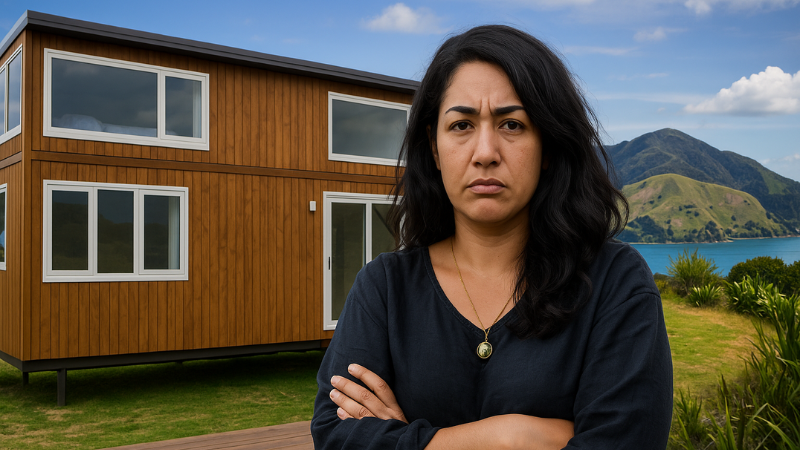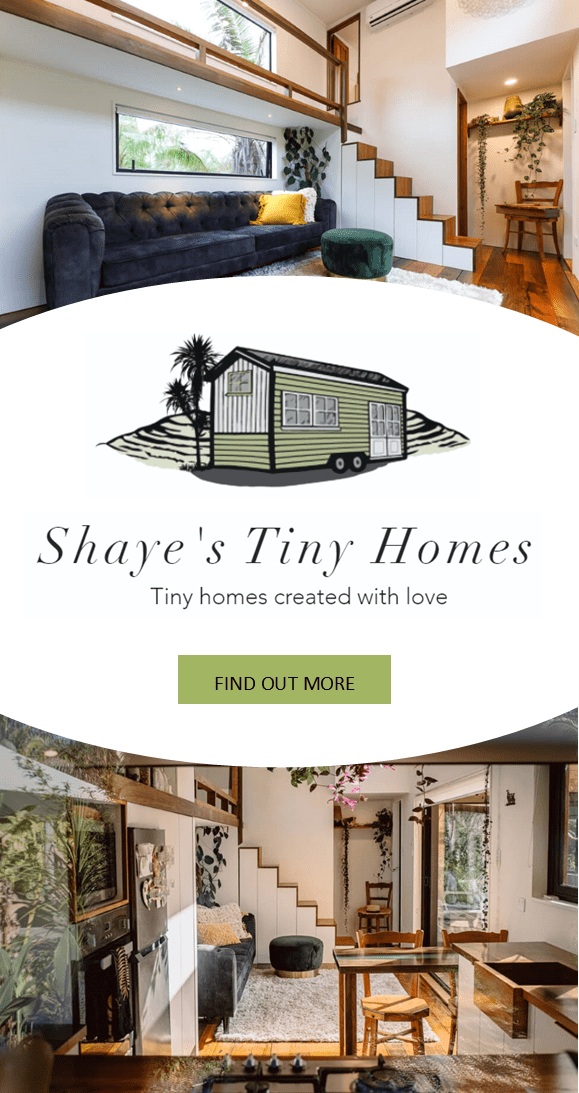It was supposed to be her dream home. Cosy, cleverly designed, and mobile. But just six months after moving into her custom-built tiny house, Sarah* noticed something odd.
“There was a strange smell coming from under the bathroom floor,” she recalls. “It turned out the builder hadn’t sealed the wet area properly. The entire subfloor had started to rot.” The remediation cost her over $10,000, money she’d saved for a greywater system and solar upgrades. “It was devastating. And the builder refused to take responsibility.” Sarah isn’t alone. As the popularity of tiny homes grows, so too do the stories of costly mistakes made during the buying process. From shoddy workmanship to legal blind spots, many first-time buyers are learning the hard way that “tiny” doesn’t always mean “simple.”
Unlike traditional housing, tiny homes, especially those on wheels, fall into a grey area of regulation in New Zealand. Depending on their use and how they’re classified, they may be considered vehicles, buildings, or something in between. Consumer NZ spokesperson Jessica Wilson warns that this legal ambiguity makes it easier for disreputable operators to take shortcuts. “There’s no formal register of builders, no mandatory warranties, and no consistent building standards across the board,” she says. “It’s essentially a buyer-beware market.” That’s something Christchurch resident Dave learnt after purchasing his first tiny house from a well-known builder. “They advertised it as ‘certified,’ but it turned out the certification was just for the trailer, not the house itself.” When Dave tried to sell the home a year later, the lack of a Code Compliance Certificate became a sticking point with buyers. “I had to knock $20,000 off the asking price.”
Mistake #1: Not Doing Due Diligence on the Builder
One of the most common regrets among tiny house buyers is rushing into a build without properly vetting the company behind it. Megan, who lives in a 11-metre tiny home in Christchurch, says she was drawn in by slick marketing and a fast turnaround time. “I checked their Facebook reviews but didn’t ask to speak to previous customers,” she admits. “If I had, I would’ve found out about the delays, the dodgy wiring, and the roof leak that affected several of us.” Tiny house consultant Rebecca McLean says a few simple checks can save buyers thousands. “Ask for recent client references, not just testimonials on a website,” she advises. “Request proof of insurance, check the company’s registration status, and get clarity on warranties. If something feels off, walk away.”
Mistake #2: Overlooking Legal and Site Requirements
Another trap is buying a tiny house without fully understanding where you can legally place it. Councils vary widely in how they treat tiny homes, and even mobile homes can require resource consent in certain areas. Shane, who bought a tiny home for his daughter to live in on his property outside Nelson, was blindsided by local zoning rules. “We were told by the builder we didn’t need consent because it’s on wheels,” he says. “But the council said that because she was living in it full time and connected to services, it counted as a building.” The result? A $12,000 compliance bill. Many buyers assume that tiny homes automatically fall under the building code exemptions, but that’s not always the case. Sharla May, founder of Tiny House Hub, says it’s essential to understand your council’s stance. “We see this all the time, people buy the home first and figure the land out later. It needs to be the other way around.”
Mistake #3: Blowing the Budget on Aesthetics
From cedar cladding to high-spec benchtops, the tiny house movement is no stranger to luxury finishes. But several homeowners we spoke to said their biggest regret was overspending on looks rather than functionality. “I spent $6,000 on bifold doors and then realised I had no money left for a composting toilet,” laughs Anna, who lives in her tiny home near Taupō. “They look amazing, but it’s not exactly practical when you’re peeing into a bucket.” Industry professionals recommend prioritising structural integrity, insulation, ventilation, and smart storage over fancy upgrades. “Tiny homes are subject to a lot of movement, especially when towed,” says Angus Hamilton from Tiny Towing Solutions. “What looks good in a showhome doesn’t always hold up on the road.”
Mistake #4: Not Future-Proofing the Design
Life changes, and so should your tiny house. But many early adopters say they wish they’d thought more carefully about long-term needs. Gill and her partner moved into a 8-metre tiny home in their late 50s. “It was perfect at the start, compact and cosy,” she says. “But as we aged, the ladder to the loft got harder and harder. Now my husband has a knee issue and can’t sleep up there at all.” Other regrets include limited kitchen bench space, no provision for pets, or lack of privacy when living as a couple. “Tiny living magnifies every little inconvenience,” Gill adds. Designers recommend choosing a layout with future adaptability. Ground-floor sleeping, space for a washing machine, and room for a desk or second occupant are all worth considering.
Mistake #5: Skipping a Contract or Formal Agreement
A surprising number of tiny home buyers enter into handshake agreements or vague email chains, assuming goodwill will carry the project. It’s a risk that can backfire badly. Wellington-based buyer Helena paid a $30,000 deposit for a custom build, only for the company to go into liquidation before completing the frame. “Because I didn’t have a proper contract outlining milestones or a refund clause, I was at the bottom of the list of creditors.” Industry professionals say a watertight build contract is non-negotiable. “At the very least, it should specify payment stages, a build timeline, materials, and what happens if there are delays or disputes.” They also recommends using a third-party land lease agreement when parking your home on someone else’s property. “It protects both parties and outlines responsibilities, power, water, notice periods. We have templates people can download on the Tiny House Hub.”
Despite the challenges, most tiny homeowners say they don’t regret the move, only how they went about it. I’d do it again in a heartbeat,” says Sarah. “But next time, I’d ask more questions. I’d slow down. “I’d treat it like any other major investment, because that’s exactly what it is.”
Buyer Checklist Before You Sign Anything
- Research at least three builders and speak to past clients
- Check the company’s legal status, insurance, and refund policy
- Confirm what certifications your house needs and who provides them
- Talk to your local council about compliance and site use
- Ensure your contract is comprehensive and signed
- Budget realistically for both build and land setup costs
- Think long-term: accessibility, storage, and lifestyle shifts
- Don’t pay large deposits without clear terms


